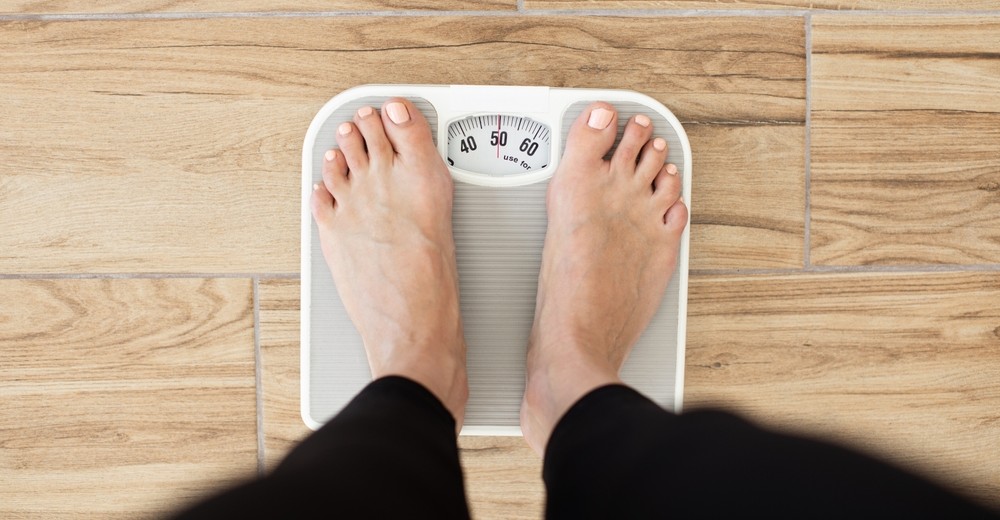Laxatives are often marketed as a quick fix for weight loss, promising to flush out excess pounds in a matter of hours. However, using laxatives for weight loss is a controversial and potentially dangerous practice that may do more harm than good. In this guide, we’ll explore how laxatives work, their effectiveness for weight loss, associated risks, user experiences, and healthier alternatives to help you achieve sustainable weight loss safely.
What Are Laxatives?
Laxatives are medications or substances that promote bowel movements to relieve constipation. They come in various forms, including pills, teas, suppositories, and powders, and work by stimulating the intestines, softening stool, or increasing water content in the bowels. Common types include:
- Stimulant Laxatives: (e.g., Dulcolax, Senokot) Trigger intestinal contractions.
- Osmotic Laxatives: (e.g., Miralax, Milk of Magnesia) Draw water into the colon.
- Bulk-Forming Laxatives: (e.g., Metamucil, FiberCon) Add fiber to stool.
- Stool Softeners: (e.g., Colace) Moisten stool for easier passage.
While effective for occasional constipation, using laxatives for weight loss is an off-label use not endorsed by medical professionals.
How Do Laxatives for Weight Loss Work?
Laxatives for weight loss are often misused based on the misconception that they reduce body fat or calorie absorption. Here’s how they actually work:
- Water Loss: Laxatives increase fluid excretion through bowel movements, leading to temporary weight loss from dehydration. This can show a lower number on the scale (1–5 pounds), but it’s not fat loss.
- Minimal Calorie Impact: Most calories are absorbed in the small intestine, before laxatives (which act in the colon) take effect. A 2014 study in The American Journal of Gastroenterology found laxatives have negligible impact on calorie absorption.
- Bowel Emptying: Clearing the colon of stool creates a feeling of lightness, but this is temporary and reverses once normal eating resumes.
Are Laxatives for Weight Loss Effective?
Laxatives for weight loss are not effective for sustainable fat loss. The weight lost is primarily water and stool, which returns quickly after rehydration and eating. A Journal of Eating Disorders review noted that laxative misuse does not lead to long-term weight reduction and is associated with significant health risks. Any perceived benefits are short-lived, typically lasting hours to a day, and do not contribute to meaningful fat loss (required for 1–2 pounds weekly loss via a 500–750 calorie deficit).
Risks and Side Effects of Using Laxatives for Weight Loss
Using laxatives for weight loss poses serious health risks, especially with frequent or long-term misuse:
- Dehydration: Excessive fluid loss can cause dizziness, fatigue, headaches, and, in severe cases, kidney damage or fainting.
- Electrolyte Imbalance: Loss of potassium, sodium, and magnesium can lead to heart palpitations, muscle cramps, or arrhythmias. A 2018 Clinical Nutrition study linked chronic laxative use to electrolyte disturbances in 20–30% of users.
- Digestive Damage: Overuse can weaken intestinal muscles, leading to “lazy colon” (dependency on laxatives for bowel movements) or chronic constipation.
- Nutrient Deficiencies: Frequent bowel movements reduce absorption of vitamins and minerals, risking deficiencies like low calcium or iron.
- Mental Health Impact: Misuse is linked to eating disorders like bulimia, with International Journal of Eating Disorders reporting laxative abuse in 10–15% of eating disorder patients.
- Other Side Effects: Cramping, diarrhea, bloating, or rectal irritation are common, especially with stimulant laxatives.
The FDA warns against using laxatives for weight loss, and medical guidelines recommend against non-prescribed use beyond occasional constipation relief.
Real User Experiences with Laxatives for Weight Loss
Feedback from forums and health platforms reveals mixed experiences, often highlighting risks:
- Positive Reviews (Short-Term):
- “I used a laxative tea and lost 3 pounds overnight. Felt lighter for an event!” – Emma, 29.
- “Dulcolax helped me drop 2 pounds fast, but it came back the next day.” – Jake, 34.
- Negative Reviews:
- “Laxatives gave me awful cramps and diarrhea. No real weight loss, just misery.” – Sarah, 41.
- “Used laxative pills for a month and felt weak. My doctor warned me about dehydration.” – Lisa, 36.
Users frequently regret misuse, citing temporary results and uncomfortable side effects, with many transitioning to healthier methods after learning the risks.
Why Laxatives Are Not a Safe Weight Loss Solution
Laxatives for weight loss fail to address fat loss, the cornerstone of sustainable weight reduction. They can also create a dangerous cycle of dependency and health complications, particularly when used regularly. The National Institute of Diabetes and Digestive and Kidney Diseases emphasizes that safe weight loss requires a calorie deficit through diet and exercise, not artificial purging methods. For those struggling with weight or body image, consulting a dietitian or therapist is far safer than resorting to laxatives.
Healthier Alternatives to Laxatives for Weight Loss
Instead of laxatives, consider these evidence-based, safe alternatives for weight loss:
- Balanced Diet: Focus on low-calorie, nutrient-dense foods like vegetables, lean proteins, and whole grains. A The Lancet study showed a 500-calorie daily deficit led to 5–10% body weight loss in 6 months.
- High-Fiber Foods: Natural fiber from fruits (e.g., apples), vegetables (e.g., broccoli), and legumes promotes regular bowel movements without laxative risks. Aim for 25–35g fiber daily.
- Exercise: Combine 150–300 minutes of weekly cardio (e.g., walking) and strength training to burn calories and build metabolism-boosting muscle. A Journal of Obesity study found exercise enhanced fat loss by 20–30%.
- Hydration: Drink 8–10 cups of water daily to support metabolism, digestion, and natural detoxification.
- Meal Replacement Shakes: Protein shakes (150–200 calories) curb hunger and provide nutrients, unlike laxatives. Brands like Premier Protein cost $15–$30/month.
- Professional Support: Work with a dietitian or join programs like Weight Watchers ($15–$45/month) for structured, sustainable plans.
Tips for Safe Weight Loss Without Laxatives
To achieve healthy weight loss without relying on laxatives for weight loss, follow these tips:
- Create a Calorie Deficit: Use an app like MyFitnessPal to track intake and aim for 1,500–2,000 calories daily, depending on your size and activity.
- Eat Protein and Fiber: Include 20–30g protein (e.g., chicken, tofu) and 5–10g fiber (e.g., oats, spinach) per meal to stay full and support digestion.
- Exercise Regularly: Aim for 30 minutes of activity most days, mixing cardio and weights for optimal fat burn.
- Monitor Progress: Weigh weekly and track non-scale victories (e.g., energy, clothing fit) to stay motivated.
- Seek Support: Join weight loss groups or consult a dietitian to address emotional eating or plateaus.
- Avoid Quick Fixes: Steer clear of fad diets or products promising rapid results, as they often lead to regain.
Sample Healthy Weight Loss Meal Plan (No Laxatives)
Here’s a one-day plan for sustainable weight loss (1,400–1,600 calories):
- Breakfast: ¾ cup Greek yogurt, ½ cup berries, 1 tbsp chia seeds (300 calories, 15g protein, 5g fiber).
- Snack: 1 medium apple, 1 tbsp peanut butter (180 calories, 4g fiber).
- Lunch: Grilled chicken salad with 3 oz chicken, 1 cup spinach, ½ cup chickpeas, 2 tbsp vinaigrette (400 calories, 20g protein, 6g fiber).
- Snack: 1 cup baby carrots, 2 tbsp hummus (150 calories, 5g fiber).
- Dinner: 4 oz baked salmon, 1 cup roasted broccoli, ½ cup quinoa (450 calories, 25g protein, 4g fiber).
- Total Calories: ~1,480, ~80g protein, ~24g fiber
Pair with 64 oz water and 30–45 minutes of exercise (e.g., brisk walking).
Is Using Laxatives for Weight Loss Right for You?
Laxatives for weight loss are not recommended for anyone, as they:
- Do not promote fat loss, only temporary water loss.
- Pose significant health risks like dehydration and digestive damage.
- Are ineffective for sustainable weight loss compared to diet and exercise.
They may be appropriate only for medically supervised constipation relief, not weight management. If you’re struggling with weight loss or considering laxatives, consult a healthcare provider or dietitian for safe, personalized guidance.
Final Thoughts on Laxatives for Weight Loss
Laxatives for weight loss are a risky and ineffective approach, offering only temporary water loss with serious health consequences like dehydration, electrolyte imbalances, and digestive issues. Sustainable weight loss of 1–2 pounds per week requires a calorie deficit, nutrient-dense foods, exercise, and professional support—not quick fixes. By choosing healthier alternatives like high-fiber diets, protein shakes, or structured programs, you can achieve your goals safely and effectively.
Always consult a doctor before using laxatives or starting a weight loss plan. Have you considered laxatives for weight loss or tried safer methods? Share your experiences or questions in the comments below!



